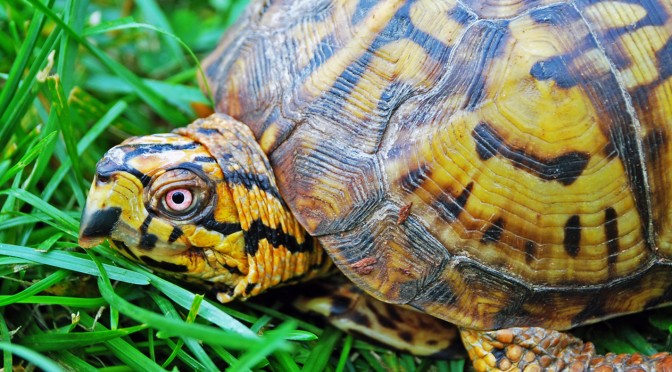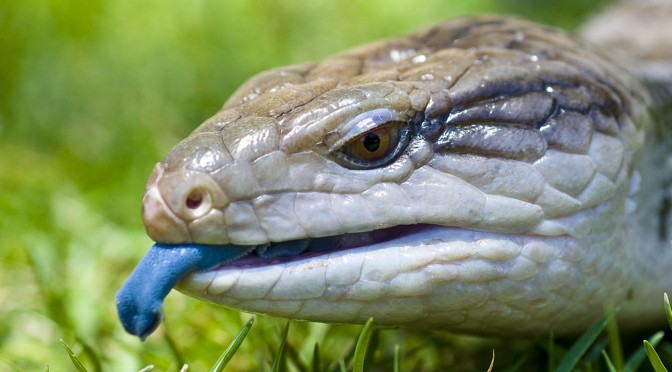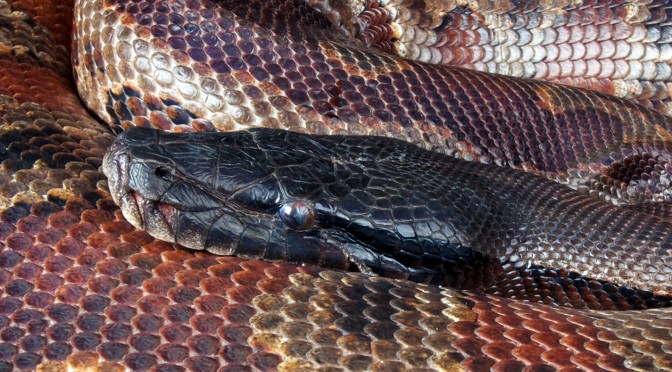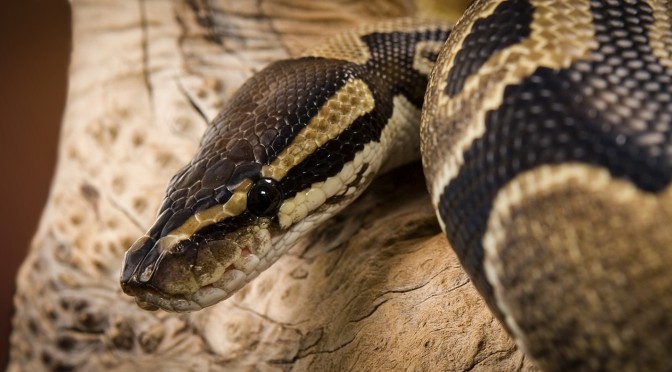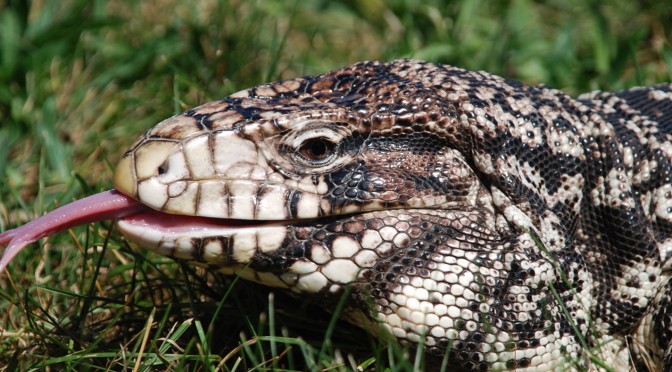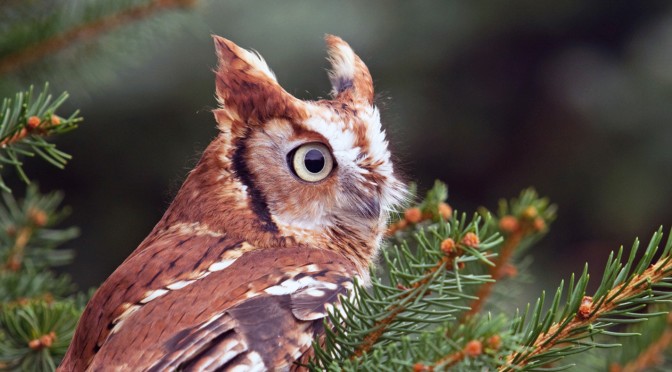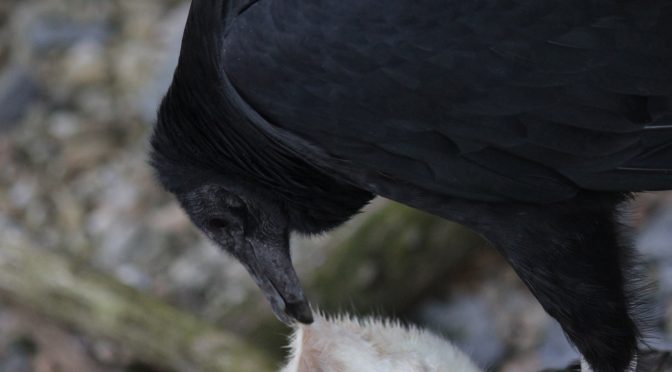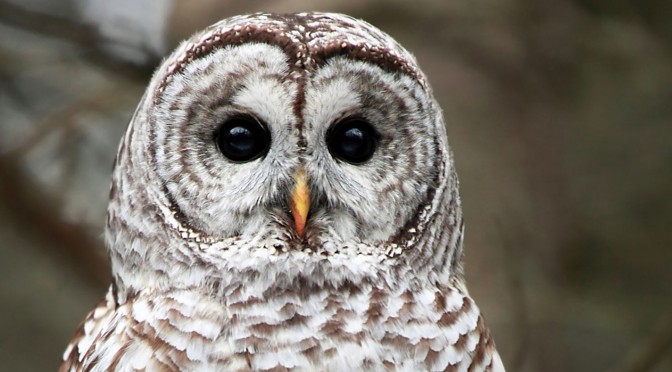NOTE: Education Animals are “behind-the-scenes” animals & only appear to the public during Educational events. This includes scheduled events or programs such as daily animal mingles, private onsite programs, and zoo reaches. For more information, please reach out to edureservations@lvzoo.org.
Program and General Information
The Eastern box turtle is a vulnerable species of turtle found in the open fields, woodlands, pastures, and marshy meadows of Eastern United States. They can grow up to 8 inches in length and are characterized by their dome-like shell with yellow and orange splotches that develop into a pattern across the top of the shell, which fades as the turtle matures. Eastern box turtles are omnivores that enjoy eating a variety of insects, vegetables, greens, and fruit. Breeding season begins in the spring and continues through the summer, with females laying 3-8 eggs per clutch. Incubation lasts 2-3 months and it can take over 5 years for box turtles to mature. This species faces challenges from human activities, including agriculture, urbanization, and the pet trade.
Diet
Eastern box turtles are omnivores. meaning they eat a variety of meat and plant material. Younger box turtles are predominantly carnivorous eating insects, snails, worms, other small reptiles, and even smaller mammals. As they mature, they become more herbivorous and their diet is focused more on land plants.
Habitat and Range
The Eastern box turtle is found throughout Eastern and parts of Central United States, from Southern Maine to Georgia and westward to Michigan, Illinois, and Tennessee. They prefer open fields and woodlands, pastures, and marshy meadows where the habitats are moist and there is plenty of leaves and surface soil to hide in. They can often be found soaking in puddles, seeps, and springs.
They prefer temperatures between 70-85 degrees, but will tolerate colder nighttime temperatures.
Eastern box turtles will form ranges of foraged areas up to the size of 2 football fields over their lifetime. Not yet mature turtles, or unestablished male turtles will move more vastly, but only in one direction. Some turtles’ territories will overlap and they can often be found in groups. During the winter, box turtles will hibernate in soil, mud, or abandoned mammal burrows.
Common Physical Features
Eastern box turtles are a relatively small turtle, growing up to 8 inches in length. Their darker shell is high and domed with splotches of yellow and orange. These splotches form a pattern across the carapace, or top of shell, which will fade as the turtle matures. The unique pattern that forms can actually be used to distinguish between individuals in a population. Females tend to be duller in color when compared to males. Males have brighter colors, reddish/orange eyes, and a more concave plastron, while females are typically much duller and have yellow/brown eyes. They have 5 toes on their front feet and 4 on their hind feet.
A turtle’s shell is actually a part of its body. The turtle’s ribs and backbone fuse together to form the shell. The shell is covered with a layer of protective plates called scutes. These scutes are made of keratin, the same stuff that makes up our nails and hair, and can be shed. Turtles shed their scutes for numerous reasons: as they grow, to replace damaged scutes, and to shed off any parasites or disease.
Adaptations: Box turtles are not your typical turtle. Most turtles are adapted to life underwater with flat, streamlined shells, webbed feet for swimming, and a primarily carnivorous diet. Box turtles, on the other hand, have domed shells, thicker limbs with claws for digging, and are more omnivorous, all of which allow for a more terrestrial lifestyle. So while they may be labeled as one, box turtles are actually a bad example of a typical turtle!
Box turtles also have a unique plastron, or bottom of the shell. Their plastron is actually hinged, which allows the turtle to close up completely inside their shell, hence the name “box” turtle. The domed shell allows the turtle to pull its limbs in and the hinged plastron will act like a trap door and shut the turtle inside. This will protect the box turtle from predators trying to claw or bite at it.
Box turtles have sharp beaks for tearing food items into smaller, more manageable bite-sized pieces. Their sharp claws allow then to dig in the dirt to find food and help them traverse their environment easier.
Behavior and Life Cycle
Box turtles are oviparous, meaning they lay eggs outside the body. Unlike most species, the eggs are laid in nests within the leaf litter and left unguarded. Females of this species can store sperm for several years and produce fertile offspring up to four years after copulation, but reproduction doesn’t always come easy. Females take at least 5 years to sexually mature and must find a mate whose home range overlaps theirs. They lay very few eggs and not all will be fertile.
Mating usually takes place in the spring and continues through the summer. Each year, females will usually have 1-2 clutches of eggs, which consist of 1-8 eggs. These eggs are white, brittle, and incubate for about 3 months. The temperature of the box turtle nest will determine the sex of the hatchlings: 72- 81 degrees tend to be males, 82 and above tend to be females.
Conservation Messaging
Together with Nature
Habitat destruction and fragmentation are a major concern for the box turtle populations and have put them at risk. Human activities, such as residential and commercial development, farming and ranching, construction of roads and railways, and fishing have all contributed to the decline of Eastern box turtle numbers.
What can we do?: If you see a box turtle on the road and would like to help it be sure you are moving the turtle in the direction that it was headed. These animals limit themselves to a range about the size of a football field and if you remove them from their home range they can become confused and disoriented and may not be able to find their way home.
Never remove an animal from the wild! Some well-meaning people will trap and relocate “pest” animals but the truth is, trapping rarely ends well for wildlife and is not a long term solution. While you might be thinking you are helping that animal, most people don’t realize the amount of care and time that goes in to caring for these animals, and removing them from their natural environment can be detrimental to the wild populations. If wild animals are not causing damage or posing danger, the best solution is to coexist! If you come across injured wildlife please call your local wildlife rehabilitation center as they are better equipped to handle and care for that animal.
The most important thing that we can do to help sustain their habitats is to “Leave No Trace”. Once you leave nature, no one should know that you’ve been there. This means bringing out anything that you’ve brought in. Additionally, leaving the environment unaltered is equally important.
Supporting wildlands and forests that are habitable to this species can help protect box turtles numbers from further declining.
Fun Facts
- These turtles will hibernate through the winter months.
- Box turtles eat poisonous mushrooms to make their skin poisonous to predators.
- Box turtles form internal maps of a range about 1-2 square miles and will remain in this location for the majority of their lives.
